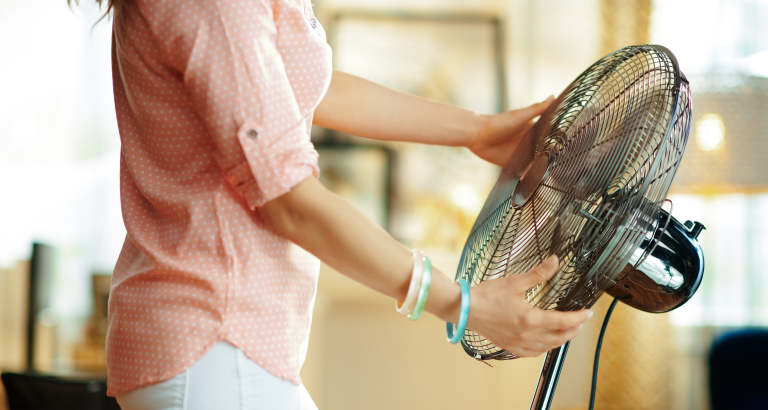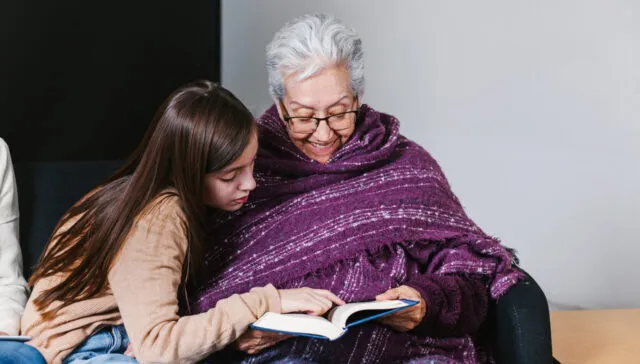How to keep your home cool in extreme heat

Across the contiguous US, the average temperature for August 2020 was 74.7 degrees Fahrenheit, which is 2.6 degrees above the 20th-century average and the third-hottest August on record. With climate change increasing the likelihood of these events in the future, communities across the country need to be prepared for more high-temperature events. This includes learning ways to keep your home cool in extreme heat.
Research from Boston University School of Public Health shows that these record high temperatures are having drastic health effects on people of all ages. However, much of the infrastructure in the US was not built around the possibility of these extreme temperatures communities are now experiencing. For example, air conditioners are not as common in the north as in Georgia or Arizona. This leaves people at risk of heat-related illness when temperatures rise higher than the average, leaving some to ask, is extreme heat the most dangerous extreme weather event? So, while communities adapt to the changing climate, it’s important to find new ways to keep your home cool in extreme heat.
Extreme heat and your health
Keeping your home cool in extreme heat will help to protect your health. Prolonged exposure to high temperatures may lead to heat exhaustion, cramps, and in severe cases, heat stroke, or death. In addition, underlying medical conditions, including heart disease, kidney disease, and a number of respiratory illnesses, may be triggered by extreme heat. You can help protect yourself and your loved ones by learning to keep your home cool in extreme heat.
Sun and shade
One of the best ways to keep your home cool in extreme heat is by managing the sun and shade around your home. The sun can turn your home into an oven by baking all surfaces in intense solar energy. To keep your home cool in extreme heat, you need to reflect this energy away from the inside of your home. To accomplish this, you can:
- Plant trees and shrubs to screen your home
- Install curtains, blinds, and shutters on your windows
- Install light-colored roof materials
- Install light-colored siding or paint the outside of your home a light color
Urban areas are working to create shade and reflect the sun’s rays to reduce temperatures. One example of a program working to do this is the Boston University School of Public Health project in Chelsea and East Boston, MA to study heat exposure known as C-HEAT.
Insulation and weather stripping
Proper home energy management also contributes to keeping your home cool in extreme heat. A well-insulated home not only keeps a home warm in the winter months, it also can keep extreme heat from entering the house. To keep your home cool in extreme heat, make sure:
- Insulation is installed in all exterior walls and around windows and doors
- You have weather stripping around window and door openings
- There is high-quality caulking sealing all seams
Timing is everything when opening windows
Knowing when to open windows is key to keeping your home cool in extreme heat. When temperatures drop at night, you should open your windows and use fans to move the cooler air into your house. However, moving moist, saturated air into the home may work against you if the relative humidity is very high. Windows should always be shut during the midday hours when temperatures are at their highest.
Proper use of air conditioning
Air condition can help keep your home cool in extreme heat, but proper use of air conditioners is key to saving money on your electrical bills and minimizing environmental harms. First, you want to use a programmable thermostat that automatically turns the system on and off. During the hottest part of the day, use the air conditioner to cool the air. Overnight, you can use the “dry” mode of the air conditioner to remove moisture from the air and facilitate faster cooling the next day. If using the “dry” mode of your air conditioner, leave the windows closed overnight. Using air conditioning to keep your home cool in extreme heat works best with a:
- Programmable thermostat
- An air conditioner with both cool and dry modes
Fans and air circulation
Proper use of fans will keep your home cool in extreme heat and make the air feel more comfortable if you do not have air conditioning. Placing fans in the proper location in your home will improve their effectiveness. You should:
- Blow air into the home from the north-facing or shady side of the house
- Blow air out of the home on the south-facing or sunny side of the house
- Blow air upstairs from cooler downstairs spaces
- Keep air moving with slowly circulating ceiling fans
- For a quick cool-down, blow a fan over a tray of ice cubes
Cotton clothes and bedding improve comfort
If you do not have air conditioning to keep your home cool in extreme heat, you can make smart choices about the clothes you wear and the bedding you use. Cotton fabrics breathe and prevent moisture from building up on your skin. In addition, lighter colors help reflect solar energy away from your skin. To keep yourself comfortable in your home during extreme heat:
- Wear cotton clothes
- Wear light colors
- Avoid synthetics, especially in bedding
Make smart choices about using appliances
Using certain appliances can make it difficult to keep your home cool in extreme heat. Ovens vent hot air into your kitchen. Dishwashers and clothes dryers also vent hot air into your home. Consider using the microwave oven instead of a conventional oven to heat foods. Consider air-drying your dishes and clothing. In addition, many electronic devices, including cable TV boxes, televisions, and computers, generate a considerable amount of heat. Consider turning off devices that are not in use. Remember, to keep your home cool in extreme heat:
- Avoid using a conventional oven and consider the microwave
- Air-dry dishes and clothes
- Turn off unused electronics
The ultimate need is to build healthier communities to address the effects of climate change. This takes a village to make happen. Pressure from individuals on policymakers around supporting building climate-resilient cities can help have a larger impact. Climate change will continue to have impacts on our way of life, but working to mitigate the effects will improve health outcomes and your comfort – especially when you work towards keeping your home cool in extreme heat.




